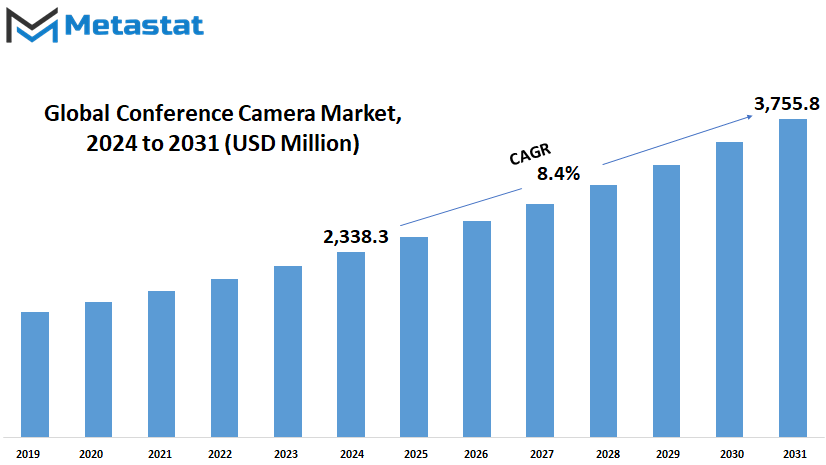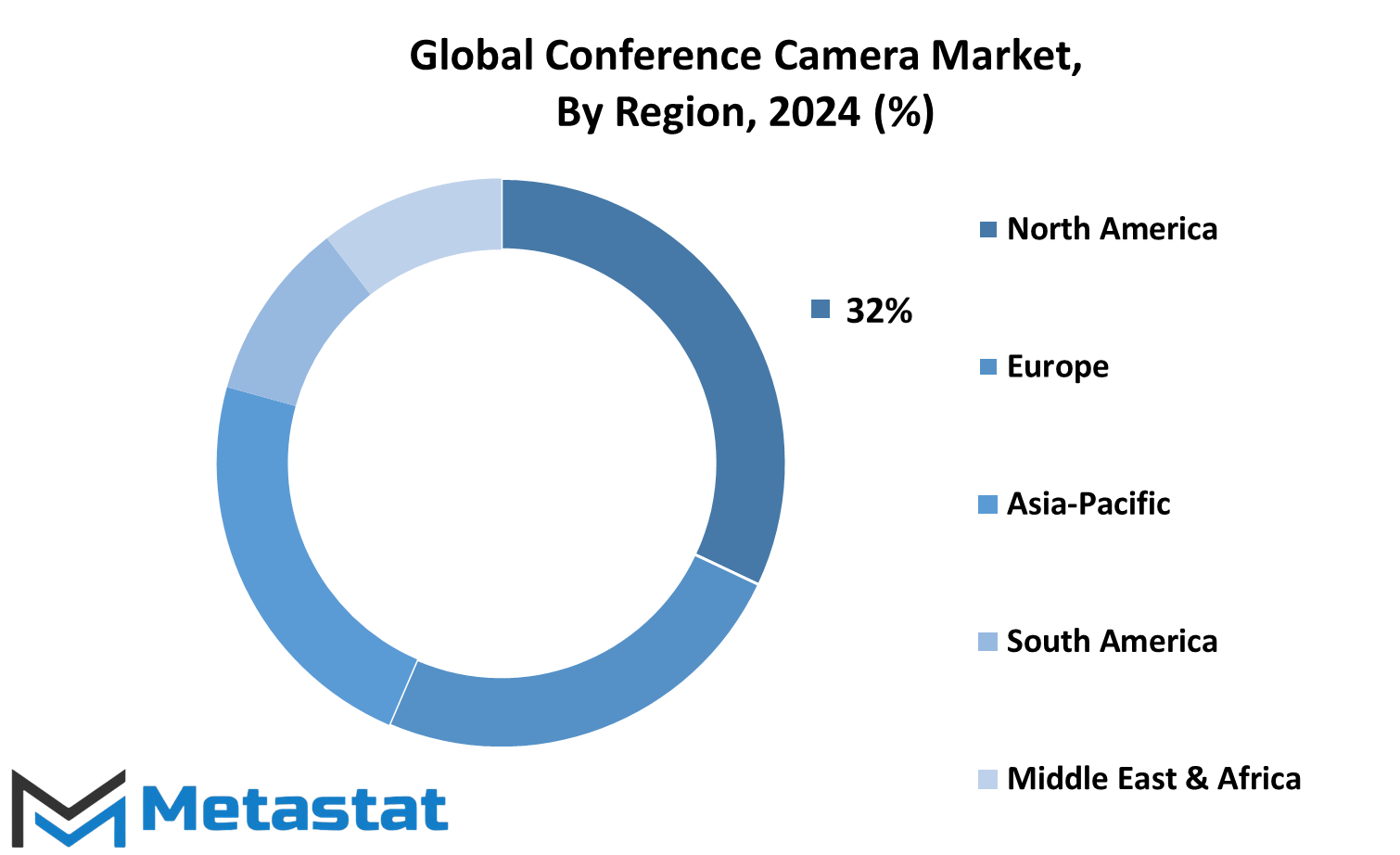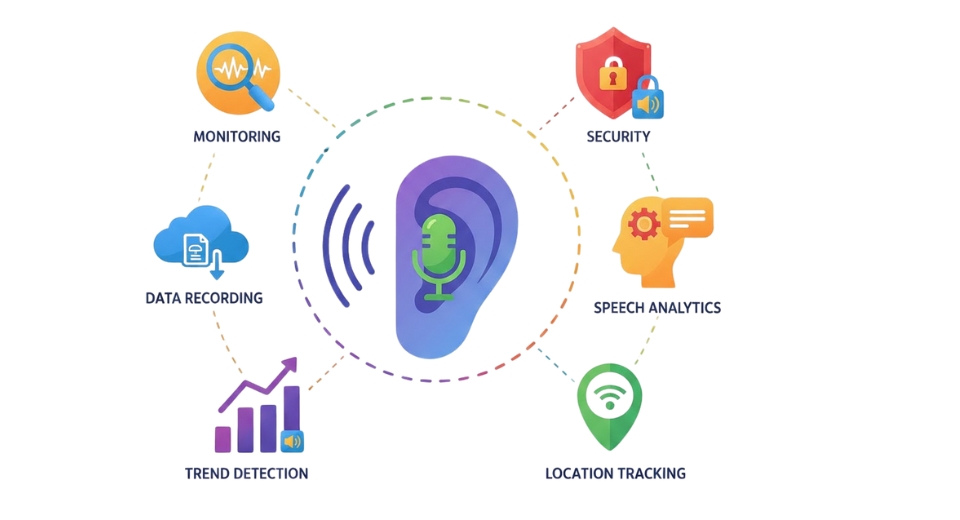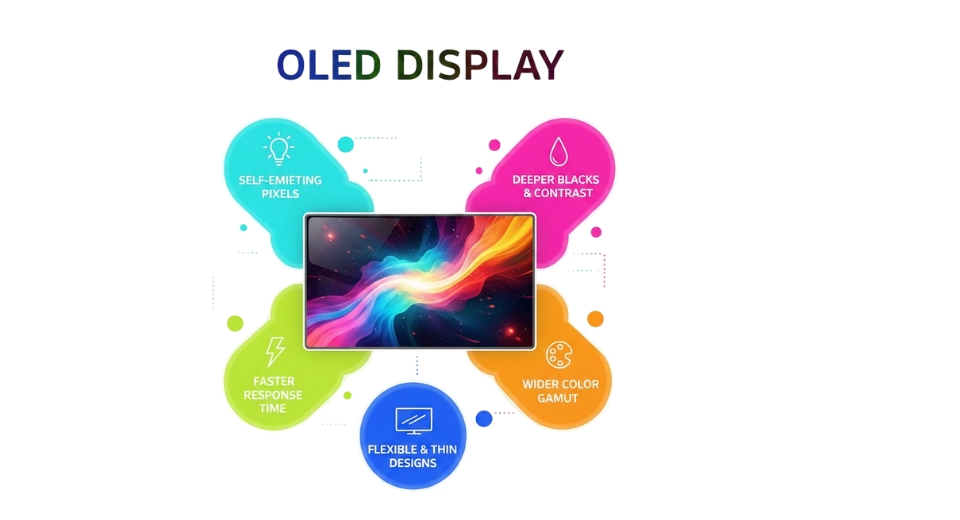MARKET OVERVIEW
The Global Conference Camera market, nestled within the broader landscape of the technology industry, presents a fascinating intersection of innovation, communication, and connectivity. This market encapsulates a diverse array of cameras designed specifically to facilitate high-quality video conferencing experiences across various platforms and environments. As the world continues to embrace remote collaboration and virtual meetings, the demand for conference cameras is poised to surge, reshaping the dynamics of professional communication.
At the heart of the Global Conference Camera market lies a commitment to enhancing the way individuals and organizations interact and collaborate in virtual spaces. These sophisticated cameras boast advanced features tailored to meet the demands of modern communication, including high-definition imaging, wide-angle lenses, and seamless integration with popular conferencing platforms. From small huddle rooms to expansive boardrooms, conference cameras cater to a spectrum of settings, ensuring crisp visuals and clear audio transmission for participants regardless of their location.
The future of the Global Conference Camera market holds promise as technological advancements drive innovation and shape consumer expectations. Anticipated developments include the integration of artificial intelligence (AI) for automated framing and tracking, enabling cameras to intelligently adjust framing and focus to accommodate the movement of participants. Furthermore, the evolution of 360-degree cameras promises to revolutionize immersive meeting experiences, transporting participants into virtual environments where they can interact seamlessly as if they were physically present.
As the global workforce becomes increasingly dispersed, the demand for conference cameras is expected to soar, with organizations seeking reliable solutions to facilitate seamless communication and collaboration across geographic boundaries. Moreover, the rise of hybrid work models, where employees split their time between remote and on-site work, will fuel the adoption of conference cameras as essential tools for maintaining productivity and fostering team cohesion.
The Global Conference Camera market is not only driven by technological innovation but also shaped by shifting societal norms and preferences. The growing emphasis on sustainability and environmental consciousness is prompting manufacturers to develop energy-efficient cameras with minimal carbon footprints, aligning with the broader trend towards corporate social responsibility. Additionally, the demand for aesthetically pleasing and compact camera designs reflects consumers' desire for sleek, unobtrusive solutions that complement modern workspaces.
The Global Conference Camera market represents a dynamic sector within the technology industry, characterized by continuous innovation and evolving consumer demands. As the world navigates the complexities of remote work and virtual collaboration, conference cameras emerge as indispensable tools, enabling seamless communication and fostering connectivity across borders. With anticipated advancements on the horizon, this market is poised for sustained growth and transformation, shaping the future of professional communication in an increasingly digital world.
Global Conference Camera market is estimated to reach $3,755.8 Million by 2031; growing at a CAGR of 8.4% from 2024 to 2031.

GROWTH FACTORS
The increasing trend of remote work and virtual meetings is boosting the demand for conference cameras, which play a vital role in enabling smooth communication and collaboration among remote teams. This surge in demand is not just a passing phase but a trend that is here to stay, as more and more companies embrace the flexibility and efficiency offered by remote work setups. Alongside this trend, continuous technological advancements in camera technology are further fueling the growth of the global conference camera market.
With each passing year, we witness notable improvements in camera specifications, such as higher resolution, wider angles, and enhanced autofocus capabilities. These advancements not only elevate the quality of video conferences but also make conference cameras more versatile, catering to a wide range of meeting scenarios and environments. As a result, businesses are increasingly investing in upgraded conference camera systems to ensure clearer, more immersive virtual meetings
However, despite the promising outlook, certain challenges persist in the market. One such challenge is budget constraints, particularly for small businesses and organizations with limited financial resources. The high cost associated with advanced conference camera systems may deter some potential buyers, slowing down market penetration in certain segments.
Additionally, compatibility and integration issues pose another hurdle to widespread adoption. Many users encounter difficulties in integrating conference cameras with their existing conferencing systems or software platforms. This can lead to frustration and reluctance to invest in new camera solutions, especially if they require significant reconfiguration of existing setups.
Nevertheless, amidst these challenges, there lies a significant opportunity for conference camera manufacturers: the emergence of hybrid work environments. As more companies adopt flexible work models that combine remote and in-person work, there is a growing need for conference camera solutions that cater to the diverse requirements of hybrid meetings. Manufacturers that can develop innovative, user-friendly solutions tailored to these hybrid work scenarios stand to gain substantial market share in the years to come.
While the global conference camera market faces certain obstacles, such as budget constraints and compatibility issues, the overarching trends of remote work adoption and technological innovation promise continued growth and opportunity. By addressing these challenges and adapting to the evolving needs of modern workplaces, conference camera manufacturers can position themselves for success in the dynamic landscape of remote collaboration.
MARKET SEGMENTATION
By Type
In the ever-evolving landscape of technology, the Global Conference Camera market stands as a testament to the constant innovation and advancement in the field of visual communication. With the rapid integration of video conferencing into various aspects of our lives, the demand for high-quality conference cameras has surged, driving significant growth in the market.
This market is categorized into different types of conference cameras, each offering unique features and functionalities to cater to diverse needs. One prominent type is the PTZ (Pan-Tilt-Zoom) Cameras, which provide users with the flexibility to adjust the camera's angle, direction, and zoom remotely. This versatility makes PTZ cameras suitable for various environments, from small meeting rooms to large conference halls, ensuring that every participant is visible and audible during video conferences.
Another type gaining traction in the market is USB Cameras, which are known for their simplicity and ease of use. These cameras can be easily connected to computers or other devices via USB ports, eliminating the need for additional hardware or complex setup procedures. USB cameras offer plug-and-play functionality, making them ideal for users who require a straightforward solution for video conferencing without compromising on quality.
Wireless Cameras represent another significant segment in the Global Conference Camera market. With the increasing prevalence of mobile devices and the growing trend of remote work, wireless cameras offer the convenience of mobility and flexibility. Users can seamlessly connect these cameras to their smartphones, tablets, or laptops via wireless networks, enabling them to conduct video conferences from any location with internet access.
The market also includes a category referred to as Others, encompassing a diverse range of conference cameras with unique features and specifications. These cameras may include advanced functionalities such as 360-degree panoramic views, facial recognition, or AI-driven image enhancement, catering to specific requirements and preferences of users across various industries.
The Global Conference Camera market is witnessing rapid growth and diversification, fueled by the increasing adoption of video conferencing solutions across various sectors. With a wide range of camera types and innovative features, this market will play a crucial role in shaping the future of visual communication and collaboration in the digital age.
By Resolution
The Global Conference Camera market is segmented based on resolution into High Definition (HD) Cameras, Ultra High Definition (UHD) Cameras, and Others. This division categorizes cameras according to their picture quality, enabling consumers to choose based on their specific needs.
High Definition (HD) Cameras offer improved clarity and detail compared to standard definition cameras. They provide a sharper image, making them suitable for conferences where clear visuals are essential for effective communication. With the rise of remote work and virtual meetings, HD cameras will continue to be in demand as businesses seek better video quality for their online conferences.
Ultra High Definition (UHD) Cameras take picture quality to the next level, offering even greater clarity and detail than HD cameras. With resolutions four times higher than HD, UHD cameras deliver stunning visuals, making viewers feel like they are in the same room as the presenter. As technology advances and internet bandwidth increases, UHD cameras will become more prevalent, especially in professional settings where image quality is paramount.
The category labeled Others encompasses cameras with resolutions that do not fit into the HD or UHD classifications. This category may include cameras with lower resolutions suitable for basic video conferencing needs or specialized cameras with unique features tailored to specific applications. While not as prevalent as HD or UHD cameras, the "Others" category will still have its niche in the market, catering to diverse consumer preferences and requirements.
By Distribution Channel
In the realm of technology, the Global Conference Camera market stands as a significant player. Its influence extends through various distribution channels, including Online Retail, Offline Retail, and Others. These channels serve as conduits through which conference cameras reach consumers, each with its own advantages and challenges.
Online Retail, one of the primary distribution channels, will continue to flourish in the future. With the increasing prevalence of e-commerce platforms, consumers find convenience in purchasing conference cameras online. The ease of browsing through a wide range of products and the option for doorstep delivery will further bolster the growth of this channel. Moreover, advancements in virtual reality and augmented reality technologies may revolutionize the online shopping experience, providing consumers with immersive demonstrations of conference cameras before making a purchase.
Offline Retail, though facing competition from online platforms, will still hold relevance. Many consumers prefer the tactile experience of physically inspecting products before buying them. Brick-and-mortar stores provide this opportunity, allowing customers to interact with conference cameras firsthand, ask questions, and receive immediate assistance from sales representatives. Additionally, the trust instilled by face-to-face interactions can sway purchasing decisions, especially for high-value items like conference cameras.
The category labeled as Others encompasses various unconventional distribution channels that may gain traction in the future. This could include pop-up stores, direct sales from manufacturers, or partnerships with corporate suppliers. As technology continues to advance, new and innovative methods of distributing conference cameras may emerge, catering to specific consumer needs and preferences.
By End User
In the global Conference Camera market, there are different segments based on who uses them. These include Enterprises, Education Sector, Healthcare Facilities, Government and Defense, and Others.
Enterprises, which are businesses and companies, use conference cameras for various purposes. They use them to conduct meetings with teams located in different places, saving time and travel costs. Also, they use them for presentations, training sessions, and remote collaborations, enhancing productivity and efficiency.
The Education Sector, including schools, colleges, and universities, benefits from conference cameras in several ways. They use them for distance learning programs, connecting students and teachers across different locations. Additionally, they use them for virtual classrooms, online seminars, and guest lectures, providing a rich learning experience beyond physical classrooms.
Healthcare Facilities utilize conference cameras for telemedicine and virtual consultations. This allows patients to connect with doctors and specialists remotely, especially beneficial for those in remote areas or with mobility issues. Moreover, healthcare professionals use conference cameras for medical training, conferences, and collaboration among teams for better patient care.
Government and Defense sectors also make extensive use of conference cameras. They use them for virtual meetings, briefings, and conferences among government officials and military personnel stationed in different locations. Furthermore, conference cameras play a crucial role in surveillance and monitoring activities for security purposes.
Other sectors, including non-profit organizations and research institutions, also rely on conference cameras for various applications. They use them for webinars, workshops, fundraising events, and collaborative research projects, fostering communication and collaboration among stakeholders.
As technology continues to advance, the Conference Camera market will witness further growth and innovation. Future conference cameras will likely feature enhanced functionalities such as AI-powered voice and facial recognition, gesture control, and immersive virtual reality experiences. Moreover, they will become more compact, portable, and seamlessly integrated with other communication and collaboration tools.
With the increasing demand for remote work and virtual communication, the adoption of conference cameras will continue to rise across industries. They will become indispensable tools for facilitating seamless communication, collaboration, and decision-making processes in an increasingly interconnected and digitized world.
REGIONAL ANALYSIS
The global Conference Camera market is analyzed based on its geographical distribution, which includes North America, Europe, Asia-Pacific, South America, and the Middle East & Africa. Each of these regions is further divided into specific countries or areas to provide a comprehensive overview of the market landscape.
In North America, the market is segmented into the United States, Canada, and Mexico. These countries are key players in the Conference Camera market, with various factors such as technological advancements, increasing demand for remote communication solutions, and the presence of major market players contributing to market growth.
Europe comprises countries like the United Kingdom, Germany, France, Italy, and the rest of Europe. Similar to North America, Europe is a significant market for Conference Cameras, driven by factors like the adoption of advanced communication technologies in corporate environments and the need for efficient collaboration tools
Moving on to Asia-Pacific, this region includes India, China, Japan, South Korea, and the rest of Asia-Pacific. With rapid economic development and the expansion of the corporate sector, there is a growing demand for Conference Cameras in this region. Countries like China and India, in particular, are witnessing a surge in demand due to the increasing trend of remote work and virtual meetings.
South America, consisting of countries like Brazil, Argentina, and the rest of South America, also presents opportunities for market growth. Factors such as the growing adoption of video conferencing solutions in businesses and the need for effective communication tools contribute to the demand for Conference Cameras in this region.
Finally, the Middle East & Africa region is categorized into GCC Countries, Egypt, South Africa, and the rest of the Middle East & Africa. Despite facing challenges such as infrastructure limitations, this region is witnessing increased investments in communication technologies, which will drive the demand for Conference Cameras in the coming years.
Overall, the global Conference Camera market exhibits a diverse geographical landscape, with each region presenting unique opportunities and challenges. Understanding the market dynamics across different regions will be crucial for stakeholders to make informed decisions and capitalize on growth opportunities.

COMPETITIVE PLAYERS
The global conference camera market is witnessing significant growth, with key players such as Sony, Panasonic, Canon, Logitech, Cisco, AVer, Ricoh, Jabra, D-Link, Lenovo, Philips, Ausdom, MAXHUB, Legrand AV (Vaddio), HuddleCamHD, Lumens, InFocus, VDO360, Huddly, Yamaha, HP, and NEC leading the industry. These companies are at the forefront of developing and delivering advanced conference camera solutions that meet the evolving needs of businesses and organizations worldwide.
As technology continues to advance, conference cameras are becoming increasingly essential for facilitating remote communication and collaboration. With the rise of remote work and globalized business operations, the demand for high-quality video conferencing solutions is expected to surge in the coming years. Conference cameras enable users to conduct virtual meetings, webinars, and presentations with ease, regardless of their geographical location.
One of the key drivers of market growth is the growing emphasis on seamless communication and collaboration in the corporate sector. Businesses are increasingly adopting conference cameras to enhance communication among teams, streamline decision-making processes, and improve overall productivity. Additionally, the proliferation of mobile devices and high-speed internet connectivity is enabling users to participate in video conferences from anywhere, further driving the demand for conference camera solutions.
Moreover, advancements in camera technology, such as high-definition video capture, wide-angle lenses, and intelligent autofocus systems, are enhancing the user experience and enabling more immersive and engaging virtual meetings. These technological innovations are enabling users to communicate more effectively, collaborate more seamlessly, and achieve better outcomes in their professional endeavors.
Furthermore, the integration of artificial intelligence (AI) and machine learning (ML) capabilities into conference cameras is expected to revolutionize the market in the coming years. AI-powered features such as facial recognition, voice control, and automatic framing will enable conference cameras to adapt to users' preferences and optimize the video conferencing experience in real time. This will not only improve the efficiency and effectiveness of virtual meetings but also pave the way for new applications and use cases in various industries.
The global conference camera market is poised for significant growth in the coming years, driven by the increasing demand for remote communication and collaboration solutions. Key players in the industry are leveraging advanced technologies to develop innovative conference camera solutions that will redefine the way people communicate and collaborate in the future. As businesses and organizations continue to embrace remote work and virtual collaboration, conference cameras will play an increasingly integral role in facilitating seamless and productive communication across the globe.
Conference Camera Market Key Segments:
By Type
- PTZ (Pan-Tilt-Zoom) Cameras
- USB Cameras
- Wireless Cameras
- Others
By Resolution
- High Definition (HD) Cameras
- Ultra High Definition (UHD) Cameras
- Others
By Distribution Channel
- Online Retail
- Offline Retail
- Others
By End User
- Enterprises
- Education Sector
- Healthcare Facilities
- Government and Defense
- Others
Key Global Conference Camera Industry Players
- Sony
- Panasonic
- Canon
- Logitech
- Cisco
- AVer
- Ricoh
- Jabra
- D-Link
- Lenovo
- Philips
- Ausdom
- MAXHUB
- Legrand AV (Vaddio)
- HuddleCamHD
WHAT REPORT PROVIDES
- Full in-depth analysis of the parent Industry
- Important changes in market and its dynamics
- Segmentation details of the market
- Former, on-going, and projected market analysis in terms of volume and value
- Assessment of niche industry developments
- Market share analysis
- Key strategies of major players
- Emerging segments and regional growth potential








 US: +1 3023308252
US: +1 3023308252






